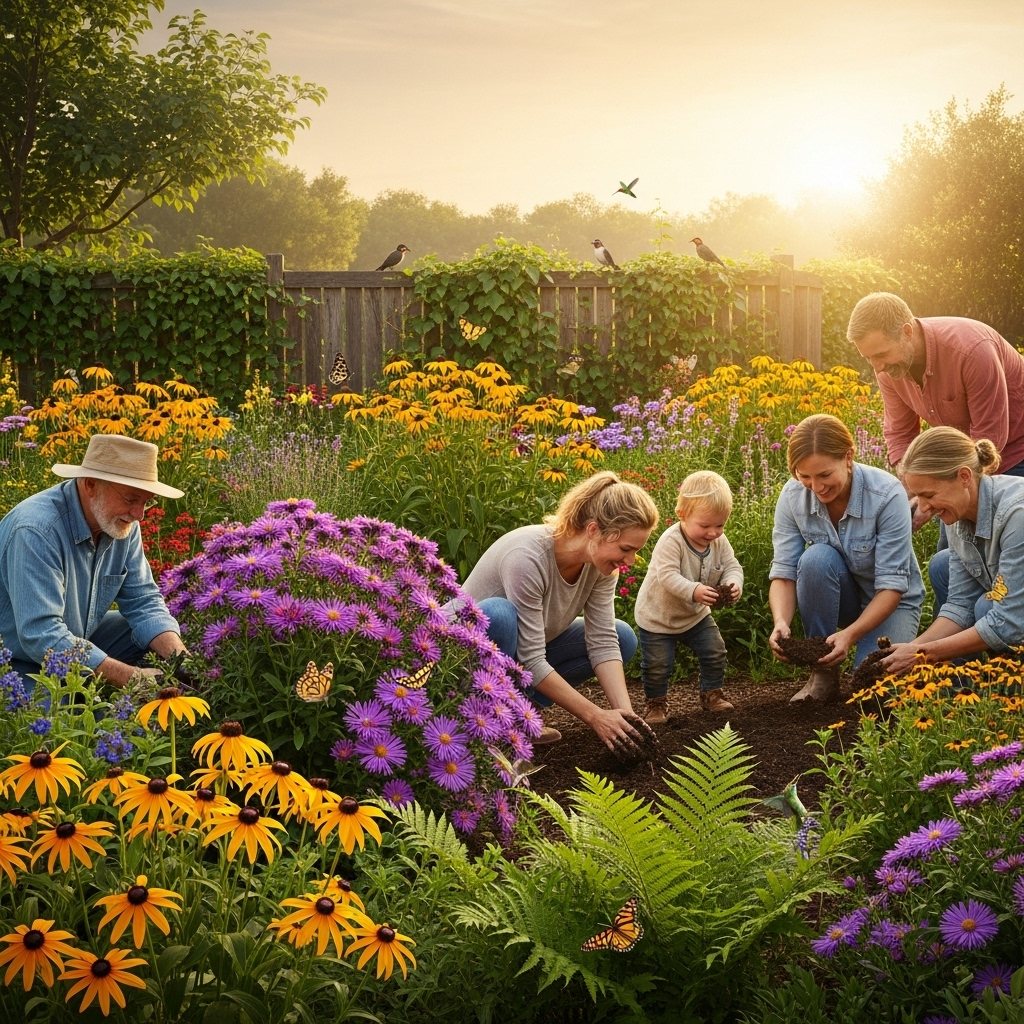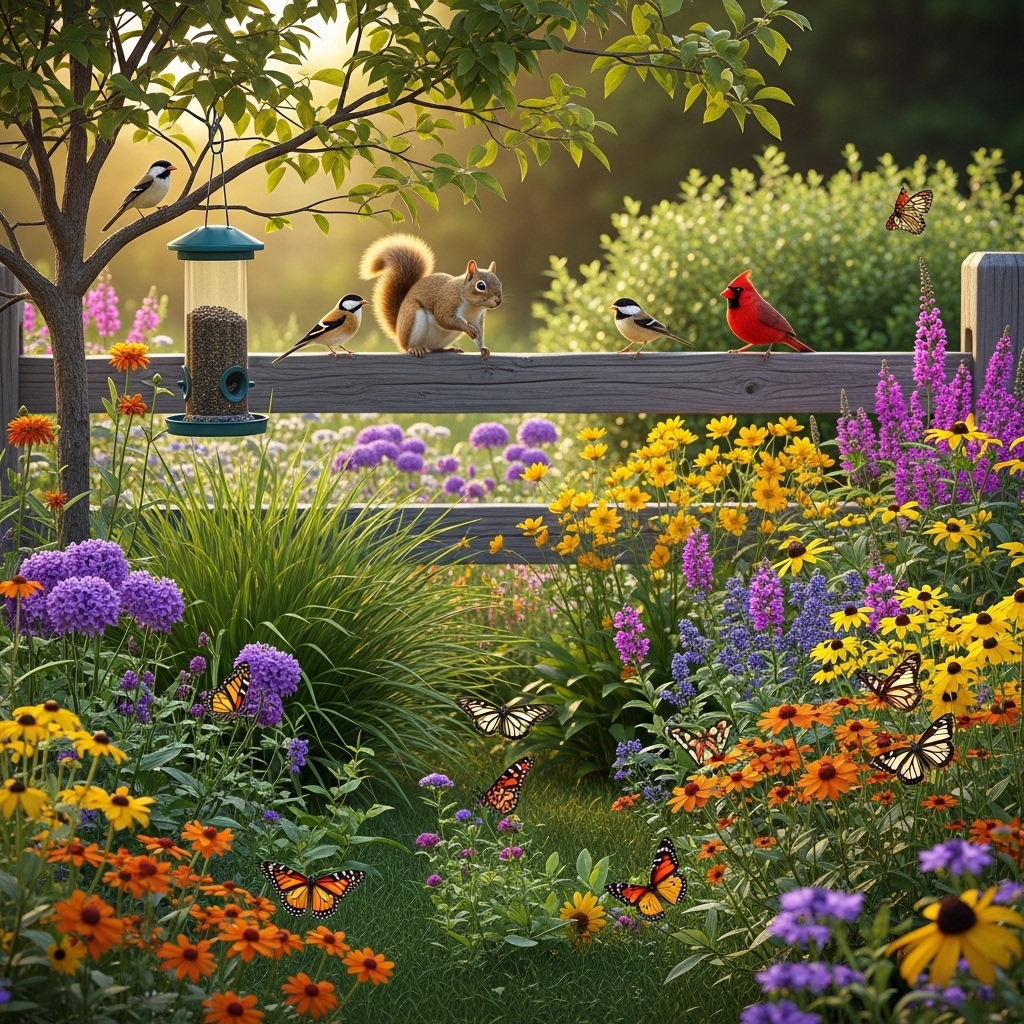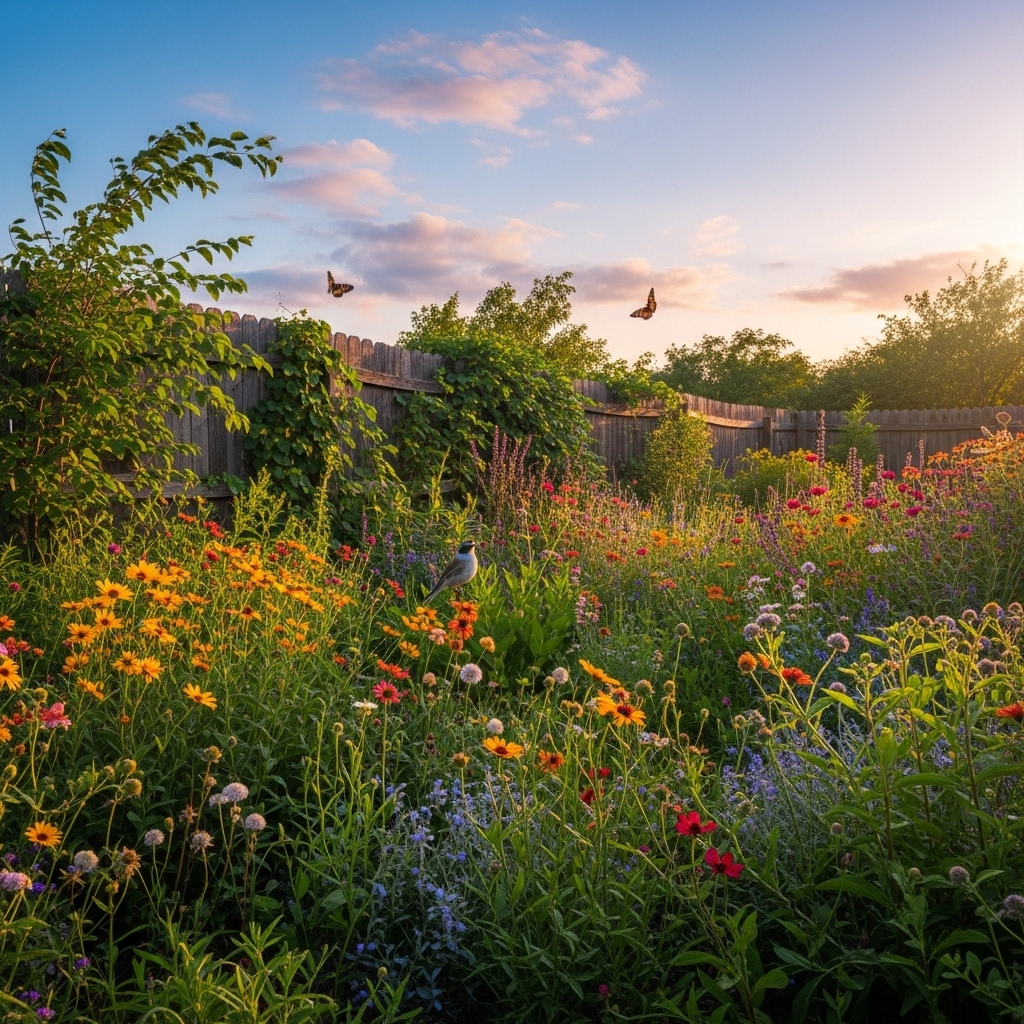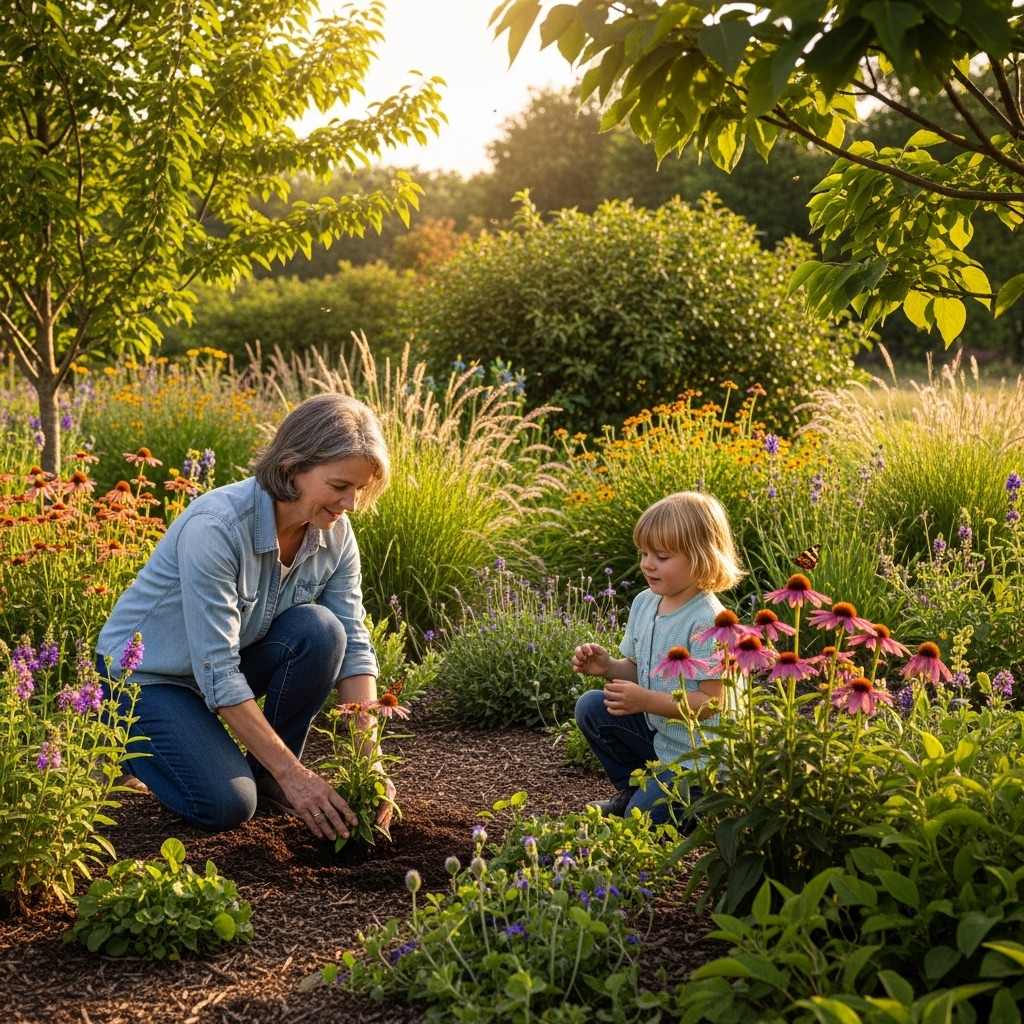Switching to a low-maintenance garden has been one of the best decisions I’ve made. Embracing native plants not only simplifies my gardening routine but also enhances the beauty of my outdoor space while supporting local ecosystems.
Why Go Native?

When I first started gardening, I was overwhelmed by the variety of plants available. The allure of exotic species was enticing, but my enthusiasm quickly turned into frustration as I found myself constantly battling pests, diseases, and the demands of high-maintenance plants. That’s when I discovered the world of native gardening, and it completely transformed my approach to outdoor spaces. Choosing plants that are indigenous to my region has provided numerous benefits that I never anticipated.
Understanding Native Plants
Native plants are species that have evolved to thrive in their local environments. They are perfectly adapted to the climate, soil type, and local wildlife, making them resilient and low-maintenance choices for my garden. By selecting native plants, I’ve noticed that they require less water, fertilizer, and pest control than non-native species. This has not only saved me time but also significantly reduced my gardening costs.
Environmental Benefits
One of the most rewarding aspects of going native is the positive impact on the environment. Native plants provide essential habitats for local wildlife, including pollinators like bees, butterflies, and birds. I’ve been delighted to watch more butterflies fluttering around my garden and hear the sweet songs of birds that have made my yard their home. By creating a native garden, I’m contributing to the conservation of these species and helping to promote biodiversity in my area.
Low Maintenance, High Reward
Transitioning to a low-maintenance garden has made my gardening experience much more enjoyable. Native plants typically require less care than their non-native counterparts, meaning fewer hours spent weeding, watering, and fertilizing. I remember spending countless weekends trying to keep my garden looking pristine. Now, I can spend that time enjoying my garden instead of laboring over it.
One of my favorite native plants is the purple coneflower (Echinacea purpurea). This hardy perennial thrives in my area and blooms throughout the summer, attracting a variety of pollinators. I’ve found that it requires very little water once established and doesn’t need any special soil amendments. The vibrant flowers add a splash of color to my garden, and I love knowing I’m supporting local wildlife with minimal effort.
Creating a Native Garden
If you’re considering making the switch to a low-maintenance garden, I’d suggest starting by researching the native plants suitable for your region. Each area has its unique species that flourish in local conditions, so it’s essential to choose those that will thrive in your garden. I found resources through local extension services and native plant societies, which provided valuable guidance on the best plants for my specific soil type and climate.
Once you’ve selected your plants, the next step is to prepare your garden bed. I recommend removing any non-native plants and weeds to give your new natives a fighting chance. Instead of conventional tilling, I opted for a no-till approach, which helps maintain the soil structure and encourages beneficial organisms. Adding a layer of organic mulch not only suppresses weeds but also conserves moisture, making it easier for my new plants to establish themselves.
Designing for Success
Designing my native garden was an enjoyable process. I chose to create a mix of perennials, shrubs, and even some small trees to add diversity and vertical interest. Layering plants by height and bloom time has allowed me to have a garden that looks beautiful throughout the seasons. I love how the autumn colors of my native dogwood (Cornus florida) contrast against the summer blooms of my coneflower.
Incorporating different plant heights also creates a natural habitat for various wildlife. I’ve noticed that the taller plants provide shelter for small birds, while the lower-growing species are perfect for ground-nesting birds. If you have space, consider adding a small water feature or birdbath to attract even more wildlife. I’ve found that these additions make my garden feel alive and vibrant.
Maintenance Tips for Native Gardens
The term “low-maintenance” doesn’t mean “no maintenance.” My native garden still needs occasional care, but it’s far less demanding than my previous gardens. I’ve learned to appreciate the beauty of natural growth cycles, so I only intervene when necessary. Regular checks for pests or diseases are essential, but I’ve found that native plants are often more resistant to these issues. I keep a watchful eye but have relaxed my need for perfection.
Watering is another area where I’ve changed my approach. Native plants can often withstand dry spells, so I’ve adjusted my watering schedule to match their needs, focusing on deep watering during dry periods instead of frequent shallow watering. This practice encourages deeper root growth and helps my plants become even more resilient over time.
As I continue to learn about native gardening, I’ve embraced the idea of letting nature take its course. There’s a certain beauty in the wildness of a native garden that I’ve come to appreciate. I encourage anyone looking to simplify their gardening routine to consider going native. It has transformed my relationship with my garden, making it a source of joy rather than a chore.
Attracting Wildlife

One of the most delightful surprises of transitioning to a native garden has been the increase in wildlife that I’ve welcomed into my outdoor space. It’s astonishing how quickly the local fauna responded to my efforts. Almost immediately, I began to notice a greater variety of birds, insects, and even small mammals exploring my garden. The more I observed, the more I wanted to enhance my garden as a habitat for wildlife.
To attract birds, I’ve incorporated various species of native shrubs and trees that provide not just berries for food but also shelter for nesting. My favorite is the serviceberry (Amelanchier spp.), which produces beautiful white flowers in the spring, followed by sweet, edible berries in the summer. I love watching the birds feast on the berries, knowing that I’m providing a valuable food source while enjoying the lively activity in my yard.
Additionally, I’ve learned that leaving some areas of my garden a bit wild can be beneficial. I’ve designated a corner for native grasses and wildflowers to grow freely. This unmanicured space has become a haven for butterflies and bees, turning my garden into a vibrant tapestry of life. I’ve taken joy in watching the monarchs flutter from flower to flower, and I’ve even spotted hummingbirds hovering around the bee balm (Monarda didyma). I never imagined that my garden could become such a sanctuary for these beautiful creatures.
The Importance of Pollinators
Pollinators are essential for a healthy ecosystem, and I’ve come to appreciate the critical role they play in my garden. By choosing a variety of native flowering plants that bloom at different times, I can provide a continuous food source for pollinators throughout the growing season. I’ve included plants like milkweed (Asclepias spp.) specifically to support the life cycle of monarch butterflies, and I’ve planted various wildflowers, such as black-eyed Susans (Rudbeckia hirta) and asters (Symphyotrichum spp.), to attract different species of bees.
Creating a pollinator-friendly environment has not only boosted the health of my garden but also enriched my gardening experience. I love observing the intricate relationships between plants and pollinators. It’s fascinating to watch how the different species interact, and I feel a deep sense of satisfaction knowing that my efforts contribute to the health of my local ecosystem.
Encouraging Beneficial Insects
In addition to pollinators, my native garden is also home to beneficial insects that help control pests naturally. I’ve learned that having a diverse plant selection attracts a variety of insects, including ladybugs, lacewings, and predatory wasps that feed on aphids and other garden pests. I’ve made a conscious effort to avoid using pesticides, allowing these beneficial insects to thrive. Instead of fearing the occasional pest, I’ve adopted a more balanced perspective. I monitor for issues and embrace the presence of these natural predators.
The beauty of a native garden lies in its ability to maintain its own balance. As I’ve watched the beneficial insects come and go, I’ve realized that they play a crucial role in keeping my garden healthy. It’s a refreshing change from the constant battle I faced in my previous gardens, where I felt I had to control every aspect of my landscape.
Seasonal Changes in My Native Garden

One of the most enjoyable aspects of my native garden is witnessing the seasonal changes. Each season brings its unique charm, transforming my outdoor space in delightful ways. Spring is a burst of color with blooming wildflowers and the return of migratory birds. I love seeing the vibrant hues of spring ephemerals like Virginia bluebells (Mertensia virginica) emerge after winter, signaling the awakening of life.
Summer is a time of abundance. The rush of growth and blooming plants creates a lively atmosphere. My garden feels like a bustling community as pollinators buzz around, and the air is filled with the sweet scent of blooming flowers. I often spend summer evenings sitting on my patio, savoring the sights and sounds of nature at its peak.
As fall approaches, I eagerly anticipate the changing foliage and the rich array of colors that my native trees and plants display. The golden hues of goldenrod (Solidago spp.) and the deep reds of the sumac (Rhus spp.) paint a stunning picture. Plus, the autumn berries become a vital food source for birds preparing for migration. I find myself captivated by the beauty of this transition and the way it illustrates the resilience of nature.
Winter, although quieter, holds its own beauty. The structural elements of my garden, like the twisted branches of the dogwood and the evergreen foliage of certain native shrubs, provide visual interest even in the cold months. I’ve come to appreciate the stillness of winter as a time for reflection, and I enjoy planning for the next gardening season, inspired by the successes and lessons learned throughout the year.
Embracing the Journey

As I reflect on my journey into native gardening, I feel a deep sense of gratitude for the lessons learned and the connections made with nature. Embracing this approach has not only changed my garden but also my mindset as a gardener. I’ve learned to appreciate the beauty of imperfection and the importance of working in harmony with the environment. The joy of watching wildlife thrive, witnessing the shifts of the seasons, and simply enjoying my time outdoors has made every bit of effort worthwhile.
I encourage anyone who is considering making the switch to native gardening to take that leap. The rewards are plentiful, and the experience is truly enriching. Whether you have a small balcony or a sprawling backyard, there’s always a way to incorporate native plants and make a positive impact on your local ecosystem. It’s a journey worth embarking on, and I’m excited to see where it takes me next.
Final Thoughts
Gardening is a deeply personal journey, and transitioning to a native garden has been one of the most fulfilling aspects of my life. I’ve found that by aligning my gardening practices with the natural world, I’ve created a space that is not only beautiful but also sustainable and beneficial for the environment. I look forward to continuing this journey, discovering new native species, and fostering an even richer habitat for wildlife.
